To a novice or novice woodworker, there is not much difference between an interior and an exterior design, at most the varnish used for the final protection. Between a gate or an interior door the only differences that come to mind are the pattern and the finesse of the execution. Yet from the wood to the construction solution and from the type of adhesive to the type of varnish, everything is different. The choice of materials and solutions is very important because it depends on them whether the gate will last for 3 months or just need to be repainted after 3 years.

Why it's important to choose wood for the outdoors
Wood is sensitive to moisture, fungi, micro-organisms, insects, and all outdoors. But some species are more resistant than others and that is why it is recommended to choose those with higher outdoor resistance. The outdoor resistance of wood is called sustainability. In general, durability refers to resistance to all external aggressors, but there are species that, for example, are resistant to moisture but have poor resistance to insects (douglas).
In terms of humidity, both wood and external humidity are important. The moisture content of outdoor wood is different from that of indoor wood. For wood used for indoor furniture the moisture content is 8-12%, and for outdoor wood 14-16%, sometimes even higher. The moisture content of wood is in equilibrium with the moisture content of the environment. Too low a moisture content in wood used outdoors means more water will be absorbed to reach equilibrium, and the result will be greater dimensional variation. Too high a moisture content creates conditions for the growth of fungi and micro-organisms, which will lead to quicker rotting.
It is high humidity that creates the conditions for insects to thrive. Very damp wood is easier to ate and will be easily attacked by insects. That's why wood in contact with wet soil, standing in standing water, will not last long.
Species with good outdoor resistance are acacia, oak, chestnut, chestnut, larch, Douglas fir, teak, iroko. Durability is unrelated to hardness, a good example being beech, which is hard and tough but not durable. It is not recommended for exterior projects, like birch or poplar. Further information on outdoor hardy species can be found at here.
The right construction solution will make the difference between a durable project and one that will fall apart after the first rain
The elements to be considered when choosing the construction solution are the dimensional variation of the wood in relation to the outside humidity, water drainage and air circulation.
Wood varies in size with outdoor humidity, i.e. swells when the humidity rises or when standing directly in water and shrinks when the outside humidity is very low. Being a non-homogeneous material, the dimensional variation is different depending on several factors: species, maturity of the tree, pruning method. For the same variation in external humidity, some species moving more and others less. This is another factor to consider when choosing the type of wood. A good choice is laminated wood. Layering reduces movement by making the element more stable. In this case too, the species chosen for lamination must be externally resistant.
Very important is the dimensional variation with cutting. Unlike metals, wood does not vary significantly in length. It does, however, vary noticeably and almost equally percentage-wise in radial and tangential direction (tangential to the annual ring). That is, a piece of wood can stretch far enough to force a fastener loose. The construction solution must be chosen to allow such wood movement without jeopardizing the construction.
It is water that can destroy wood. Not to do it immediately but only if it sits for a longer period, if it puddles on its surface. This is why the construction solution must allow water to drain away and not accumulate. It is preferable that the chosen solutions protect the wood from raindrops bouncing off the ground and the contact area between the wood and the ground.
Another important rule when choosing the construction solution is to letting the air circulate. Water does not destroy wood immediately, which proves that we can clean wood with a jet of water without anything bad happening. But if it gets stagnant, it gets into the wood, and with it comes micro-organisms, fungi and insects that destroy it. Air must circulate for the water to dry. Building solutions should not include very narrow spaces or wood directly against the wall. The air must circulate and wash away any areas damp from rain, fog or snow.
Find here the most important rules for exterior-proof construction.
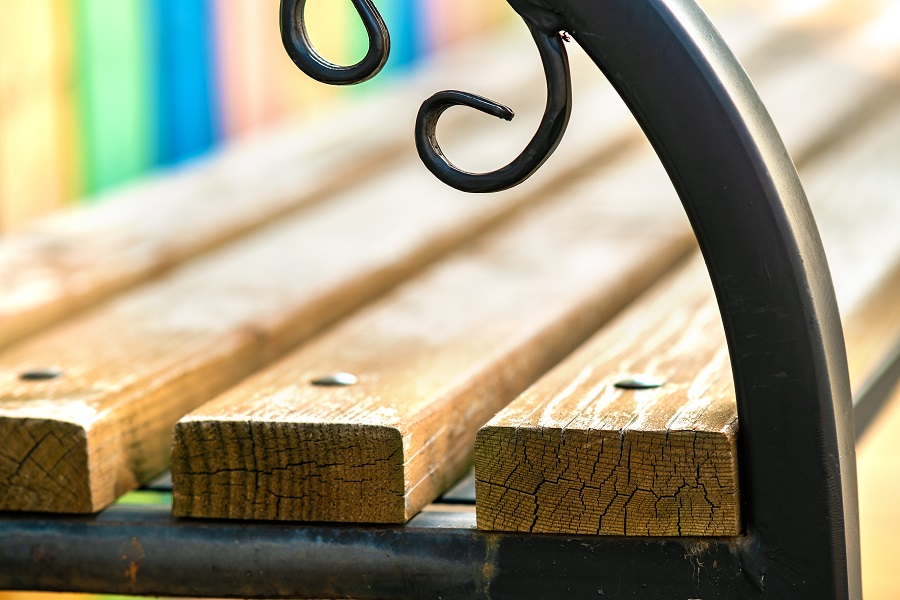
Fastening systems/adhesives
Fastening systems are also very important. If metal systems are used, it goes without saying that they must not rust in contact with water, but neither must they be attacked by the tannin in the wood and thus weakened. Oak wood, which is very tough on the outside, is known for the tannin that attacks the metal. This is why stainless steel systems are recommended for fastening the various oak components.
It is widely used, even outdoors, to glue wood elements. Like the wood chosen, the adhesive must be suitable for exterior use. Depending on their moisture resistance, adhesives are classified from 1 to 4 (D1-D4), D1 being the least resistant and D4 the most resistant. For exterior use, D4, D3 are recommended only if the construction is protected by awnings or other such systems. There are different types of adhesives that can be used outdoors, the strongest being D4 polyurethane or aracet (polyvinyl alcohol PVA adhesive).
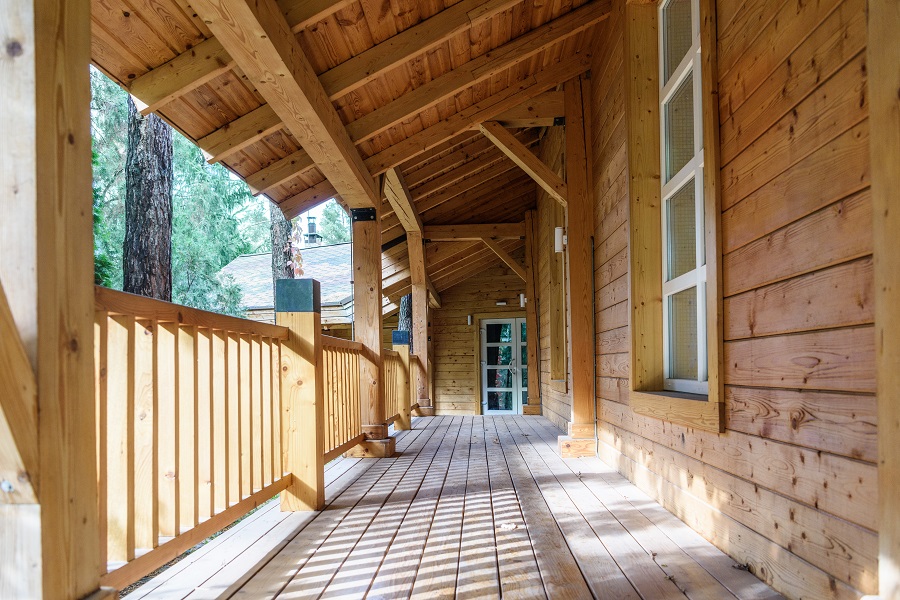
Without a hard exterior coating, the wood will not be protected and the construction will deteriorate in a short time
To prolong the life of wood used outdoors, it is advisable to protect it with systems of oils, varnishes or paints resistant to moisture and the sun's UV rays. As mentioned above, there are very hardy species that can stand outside for long enough without protection without rotting. There are also very resistant types of wood, such as Kebony or Accoya, obtained by special industrial impregnation with various substances. Ordinary impregnation, without structural modification of the wood, is quite widely used, as wood treated in this way is much more resistant than wood coated with varnishes or paints. But even these types of impregnated wood need surface protection.
Wood can be protected with oils, lacquers, varnishes or paints. Of the natural oils, the most resistant is tung oil. Oil of in is not a very good choice because it is quickly washed away by water. Depending on how much it rains in the area, it may need recoating every 3 months. Blends of the two oils are a good choice because they provide protection for the wood, both inside and out.
Lacquers, varnishes and paints must be specially formulated for exterior use. They must be elastic to allow dimensional changes in the wood without cracking and contain a small percentage of pigment to ensure resistance to UV radiation. The content of a blowing agent also protects against the sun's rays. In terms of sun resistance, the most resistant are matt paints and the least resistant are transparent gloss varnishes.
Find more information on the most suitable outdoor systems here.
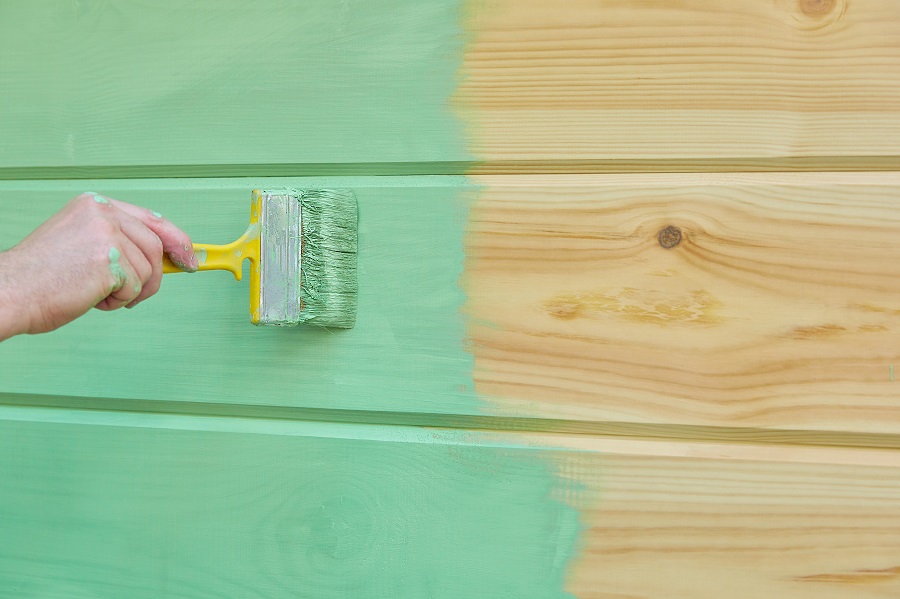
Maintenance
Any outdoor construction or object needs maintenance. Even if we are told that the applied varnish will last for 10 years, that does not mean that 10 years does not mean that we should forget about the existence of that construction. Outdoor durability depends on too many factors to take any such information at face value. To prolong the life of finished objects they should be inspected regularly. There are, for example, maintenance products that can be used for exterior wooden windows or doors. They are easy to apply and have the effect of prolonging the life of the finish.
Regular inspection of exterior construction also aims to identify possible construction faults so that they can be rectified. In this way we can discover early on if water is puddling, accumulating in certain areas, or if parts are failing to dry out. The appearance of blackness in those places indicates that the damp is persistent and mold has already set in. Left like this it will get into the wood and destroy it from the inside.
I hope you find the information useful. As always, additions are welcome. And if you have any questions or queries, please leave them below in the dedicated space. I will be sure to reply.


























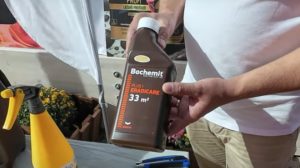
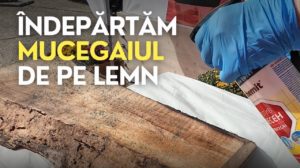








Add comment